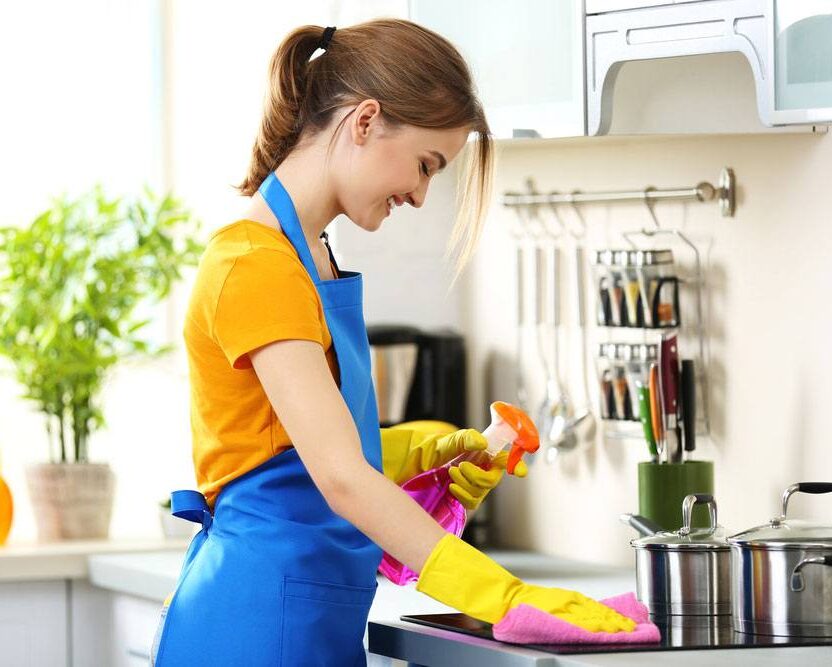The kitchen is one of the hardest working rooms in your home. Meals are prepared, snacks are assembled, and beverages are poured and served for the entire family. Younger family members who are not well-aware of the need for food safety and hygiene tend to cut corners or cover-up small messes. Over time, heavy traffic and use may create a ‘lived-in’ feel that signals the need for a deep cleaning.
The major appliances are the first priority. A mild bleach (2 tbsp/gal) and detergent solution is strong enough to disinfect and remove grease. The oven in particular needs to be cleaned inside and out every few weeks to keep it looking like new. Use the self-cleaning feature or a natural oven cleaner. Clean the racks separately.
The range top should be disassembled and cleaned. The element rings and trays, if your model has them, can go into the dishwasher. For tight spaces, around the dishwasher door for example, use an inexpensive toothbrush or cleaning tool to loosen dirt in the corners and around trim.
The fridge needs to be sanitized regularly to keep spills and leaks from becoming a bio-hazard. A small amount of liquid from thawing chicken, for example, may contain salmonella that can be transferred to fresh fruit or other ready-to-eat foods. Keep a bottle of the detergent and bleach solution under the sink in a spray bottle to wipe up spills as they happen. Deep clean once per month by removing all the food and trays then disinfect everything, dry thoroughly, and replace the items.
A toothbrush is especially handy for detailing the sink area. Sediment from standing water behind the taps or around the countertop where the sink rests, can become a discoloured gel. Spray on the cleaning solution, allow it to soak for ten minutes then scrub with the brush and wipe away residue. The garbage disposal can be cleaned by soaking a piece of bread in vinegar and depositing it into the canister. Allow it to soak for 15 minutes and follow-up with citrus fruit that may have expired. It’s a great way to recycle produce that is past its best before date.
Laminate cabinets may be cleaned with a mild cleaning solution or castille soap, whichever you prefer. Wood cabinets should be cleaned with a product similar to Murphy’s Oil Soap, which doesn’t dry the surface of natural wood like strong cleaners will do. If the cabinet doors are greasy, such as those over the range, use a 1:2 solution of vinegar and water. This will cut the grease without leaving any odour from cleaning products. However, be careful to avoid mixing bleach with vinegar as it produces a poisonous gas.
Kitchen floors will accumulate dirt and food residue that will become odorous if not cleaned. A daily wipe or damp mop in traffic areas will keep it fresh. Deep clean the floor weekly by using a disinfectant cleaner designed for your particular floor type. To achieve a professional clean, a hands-and-knees inspection of the baseboards and corners is needed. Try it! We think you’ll notice the different the details make in your new kitchen.
Contact us for a quote on residential cleaning services in Collingwood, Blue Mountains, Meaford, and Wasaga Beach.






